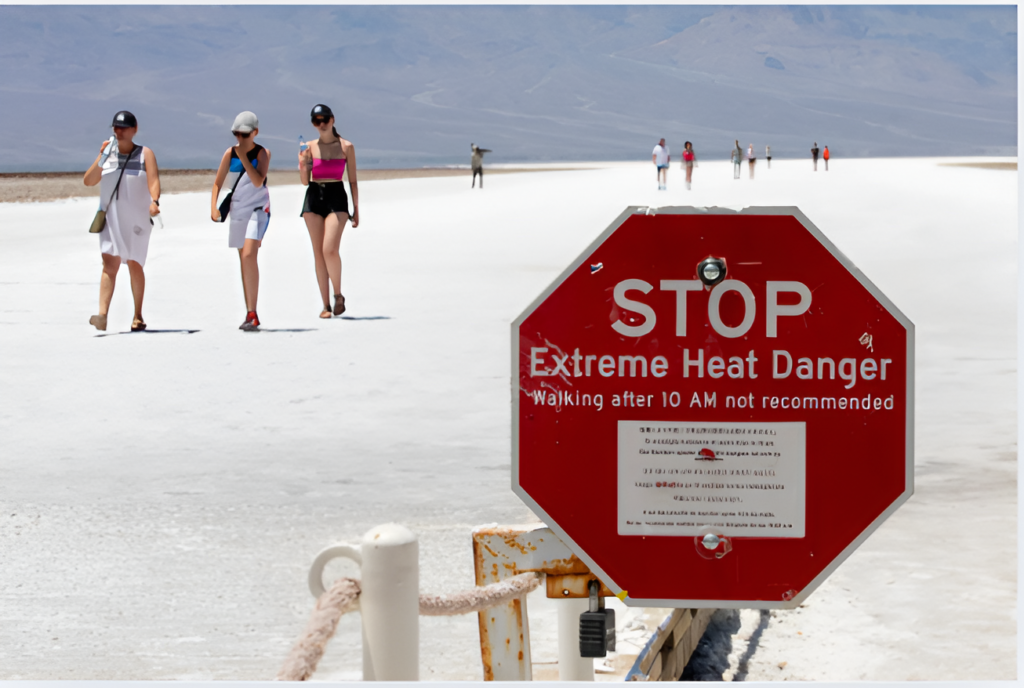
This summer, the U.S. has experienced record-breaking temperatures and prolonged heatwaves, pushing tens of millions of residents in the West under excessive heat warnings from the National Weather Service (NWS). As the mercury continues to rise, so do the risks of heat-related illnesses, including heat exhaustion and heat stroke, which can be life-threatening if left untreated.
Experts warn that heat exhaustion can quickly escalate into heat stroke, a severe condition that requires immediate medical attention. “When the body loses too much sweat and can’t keep up with the demand to regulate its temperature, it can lead to heat exhaustion,” says Dr. Jerome Cohen, president of the Medical Society of the State of New York. “If heat exhaustion is left unchecked, it can progress into heat stroke, which is even more dangerous.”
Heat is responsible for more deaths in the U.S. than hurricanes, tornadoes, and other natural disasters combined, with about 1,220 fatalities annually due to extreme heat, according to the Centers for Disease Control and Prevention (CDC). In the West, nearly 30 people have already died this July due to the heatwave, with temperatures reaching a scorching 120°F in Death Valley, California.
Understanding Heat Exhaustion
Heat exhaustion occurs when the body becomes dehydrated after excessive sweating, which impairs its ability to regulate temperature. “Sweat is the body’s cooling mechanism, but if it’s sweating too much without replenishing the lost fluids and electrolytes, the body becomes overwhelmed,” explains Cohen.
Those most at risk include the elderly, people with high blood pressure, and those working in hot environments. The symptoms of heat exhaustion include:
- Nausea and weakness
- Heavy sweating and dizziness
- Headaches and elevated body temperature
To avoid heat exhaustion, it’s essential to drink plenty of fluids—especially water and electrolyte-rich drinks—and seek shade or cooler environments when feeling unwell.
Recognizing Heat Stroke: A Medical Emergency
Heat stroke is the most severe form of heat-related illness and can develop quickly. Unlike heat exhaustion, where the skin may appear pale, clammy, and cold, someone experiencing heat stroke will have hot, dry skin, often red in color. “Heat stroke is a medical emergency that can cause confusion, slurred speech, seizures, or even unconsciousness,” warns Cohen. Body temperatures can soar as high as 106°F in just 15 minutes, which can be fatal without prompt treatment.
Symptoms of heat stroke include:
- Confusion or slurred speech
- Loss of consciousness or a seizure
- Hot, red, and dry skin
- Rapid, pounding pulse
If you or someone nearby is exhibiting these signs, call 911 immediately. While waiting for emergency help, it’s crucial to take action: Move the person to a cooler, shaded area, remove their outer clothing, and apply cold wet cloths to their skin. If possible, soak their clothes in cool water or provide them with a cold water or ice bath to help lower their body temperature.
Prevention and Immediate Action
To protect yourself and others from heat-related illnesses, always stay hydrated, avoid direct sun exposure during peak heat hours, and wear lightweight, breathable clothing. If you begin to feel lightheaded, nauseous, or experience muscle cramps, seek shade immediately and hydrate with water or sports drinks that contain electrolytes.
Remember, heat exhaustion can progress rapidly to heat stroke, so take the necessary precautions and act swiftly if symptoms appear. Your quick response can make the difference between life and death during these extreme heat events.

